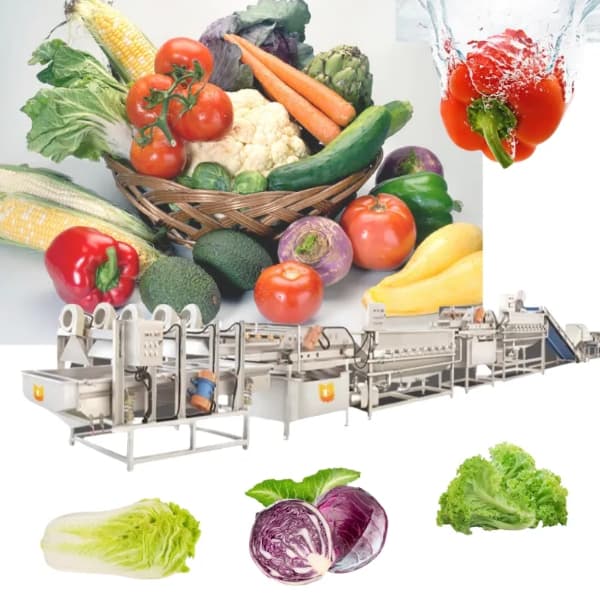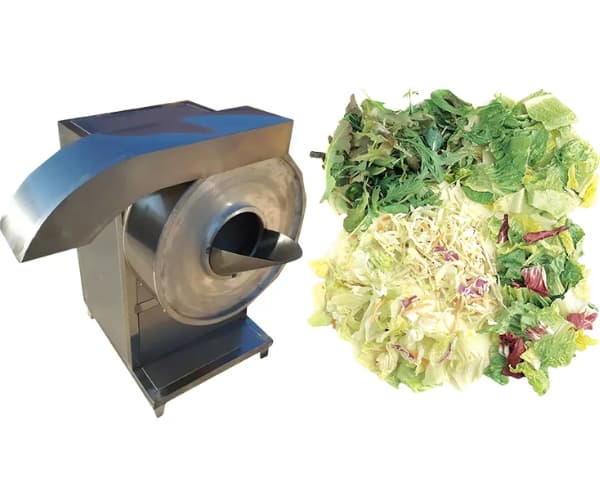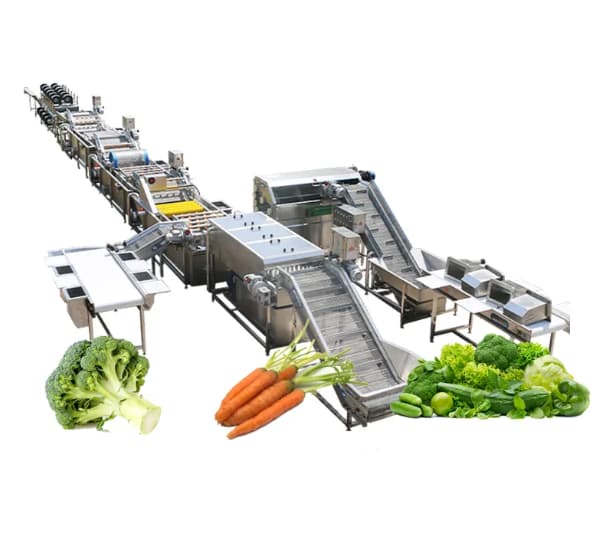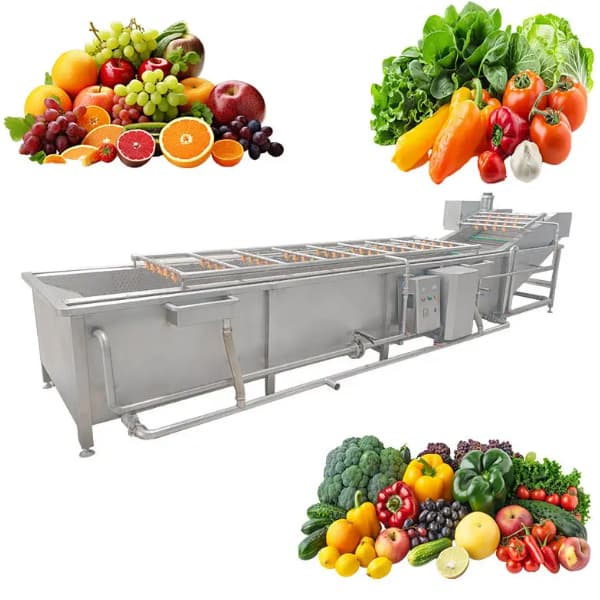Введение
Fruit and vegetable processing is a crucial sector of the global food industry. It ensures longer shelf life, enhances food safety, and reduces post-harvest losses. With increasing consumer demand for ready-to-eat and nutrient-rich food products, the significance of this industry has grown tremendously. В этой статье, we’ll explore various aspects of fruit and vegetable processing using detailed subtopics including methods, machinery, trends, and benefits.

What is Fruit and Vegetable Processing?
Fruit and vegetable processing refers to a range of mechanical, physical, and chemical techniques used to transform raw produce into products with extended shelf life or added value. This can include simple techniques like washing and cutting, or complex procedures such as canning, замораживание, сушка, or fermenting.
The objectives of processing fruits and vegetables include:
- Preserving nutrients
- Enhancing taste and appearance
- Making produce more convenient for consumers
- Extending shelf life
- Adding economic value
Post-Harvest Processing of Fruits and Vegetables
Post-harvest processing includes all activities that occur immediately after the produce is harvested. This stage is vital because most fruits and vegetables are highly perishable and can degrade quickly if not handled properly.
Key Steps in Post-Harvest Processing:
- Sorting and grading: Removal of damaged or overripe produce
- Cleaning and washing: Elimination of dirt, пестициды, and contaminants
- Охлаждение: Rapid temperature reduction to preserve freshness
- Упаковка: Protects products and prepares them for distribution
Effective post-harvest practices can reduce losses by as much as 30% в некоторых регионах.

Techniques in Fruit and Vegetable Preservation
Preservation methods play a pivotal role in maintaining the quality of fruits and vegetables. These techniques vary based on the type of produce and the desired end product.
1. Canning and Bottling
This method involves sealing fruits or vegetables in airtight containers and heating them to destroy microorganisms. Common canned goods include tomatoes, peaches, and green beans.
2. Замораживание
Freezing slows down enzymatic activity and microbial growth. It is ideal for products like berries, peas, and sweet corn.
3. Dehydration and Drying
Removing moisture from produce significantly increases shelf life. Dried fruits like apricots, bananas, and apples are popular worldwide.
4. Pickling and Fermentation
Pickling uses acidic solutions like vinegar, while fermentation utilizes natural bacteria to enhance flavor and preservation. Examples include sauerkraut and kimchi.
5. Vacuum Packing
This modern method removes oxygen from packaging to slow down spoilage and extend freshness.
Fruit and Vegetable Processing Equipment and Machinery
Modern fruit and vegetable processing heavily depends on machinery to increase efficiency and ensure hygiene.
Common Machines Used:
- Blanchers: Quickly heat produce before further processing
- Peelers and slicers: Mechanize cutting operations
- Mixers and homogenizers: Used in puree or juice production
- Sterilizers and pasteurizers: Kill harmful microbes
- Dehydrators: For moisture removal
- Packaging machines: For vacuum sealing or plastic wrapping
Automation and robotics are increasingly integrated into processing lines to enhance productivity and maintain consistent quality.

Industrial Fruit and Vegetable Processing Plants
Large-scale fruit and vegetable processing plants are designed to handle vast quantities of produce efficiently.
Features of Industrial Plants:
- High-capacity conveyors and automated washers
- Continuous monitoring systems for quality control
- Waste management systems for peels, семена, and unused material
- Cold storage and climate control units
- Advanced packaging lines for retail-ready products
Industries process raw produce into canned fruits, frozen vegetables, соусы, soups, juices, baby food, и более.
Cold Chain Management in Vegetable and Fruit Processing
А cold chain is a temperature-controlled supply chain crucial for maintaining freshness from farm to fork.
Importance of Cold Chain:
- Prevents spoilage and microbial growth
- Maintains texture, цвет, and nutritional value
- Ensures compliance with food safety regulations
Components of a cold chain include refrigerated transportation, cold storage facilities, and temperature monitoring technologies.
Value-Added Fruit and Vegetable Products
Processing not only preserves but also transforms fruits and vegetables into value-added products, increasing their market appeal.
Popular Value-Added Products:
- Fruit juices and smoothies
- Dehydrated vegetable snacks
- Jams, jellies, and marmalades
- Frozen ready-to-cook vegetable mixes
- Dried fruit snacks like raisins or banana chips
These products cater to health-conscious consumers seeking convenience without compromising on nutrition.

Trends and Innovations in Fruit and Vegetable Processing
The fruit and vegetable processing sector continues to evolve with consumer demand and technological advancements.
Ключевые тенденции:
- Clean label products: Minimal additives or preservatives
- Sustainable packaging: Biodegradable and recyclable materials
- Plant-based food innovation: Fruits and vegetables as meat alternatives
- IoT and AI in processing plants: Real-time monitoring for quality assurance
- Organic and minimally processed foods
Startups and established companies are investing heavily in R&D to offer healthier, tastier, and more sustainable products.
Benefits of Fruit and Vegetable Processing
There are numerous advantages to processing fruits and vegetables, impacting farmers, consumers, and the environment.
For Farmers:
- Reduces post-harvest losses
- Expands market access
- Provides income stability
For Consumers:
- Availability of seasonal produce year-round
- Convenience and reduced prep time
- Enhanced food safety and hygiene
For the Economy:
- Generates employment
- Supports food exports
- Promotes food security
Challenges in Fruit and Vegetable Processing Industry
Despite its advantages, the industry faces several challenges that require strategic solutions.
Major Challenges:
- High initial investment costs for processing facilities
- Lack of infrastructure in developing regions
- Perishable nature of raw materials
- Stringent food safety regulations
- Consumer demand for natural, preservative-free products
Addressing these challenges requires innovation, government support, and better supply chain management.
Small-Scale and Home-Based Fruit and Vegetable Processing
Not all processing happens in large industrial plants. Home-based and small-scale enterprises also play a significant role.
Benefits of Small-Scale Processing:
- Low capital investment
- Income generation for rural communities
- Local availability of preserved foods
- Обычай, artisanal food products
Many entrepreneurs produce pickles, dried fruits, and jams as part of cottage industries, especially in countries like India, Кения, and the Philippines.
Sustainable and Eco-Friendly Practices in Processing
Environmental responsibility is becoming a core part of food processing strategies.
Sustainable Practices Include:
- Solar-powered dehydrators
- Composting of food waste and peels
- Water recycling in processing plants
- Use of biodegradable packaging
- Sourcing locally to reduce carbon footprint
Such practices not only reduce environmental impact but also appeal to eco-conscious consumers.
Quality Control and Food Safety in Processed Produce
Ensuring safety and maintaining quality are non-negotiables in fruit and vegetable processing.
Quality Control Measures:
- Regular microbial testing
- Monitoring of temperature and humidity
- Hygiene audits and certifications
- Standard Operating Procedures (Сов)
- Traceability systems for recalls and tracking
Food safety certifications like HACCP (Анализ опасностей и критические контрольные точки) и ISO 22000 are often required for export and retail.
The Future of Fruit and Vegetable Processing
The future of the industry is promising, powered by innovation and a global shift toward healthier lifestyles.
Чего ожидать:
- Increased use of robotics and AI
- Growth in functional and fortified fruit/vegetable products
- Expansion of e-commerce for processed food delivery
- Development of zero-waste processing models
- Integration with vertical farming and urban agriculture
Как технологии достигают, processing will become more efficient, sustainable, and consumer-friendly.
Заключение
Fruit and vegetable processing is a cornerstone of modern food systems, offering solutions to food security, waste reduction, and economic development. From freezing and canning to cutting-edge technologies like AI and biodegradable packaging, the industry is evolving rapidly.
Whether you’re a farmer, food entrepreneur, investor, or consumer, understanding the intricacies of fruit and vegetable processing is vital in today’s world. As the global demand for healthy, удобный, and sustainable food grows, so too will the opportunities within this dynamic and essential industry.
